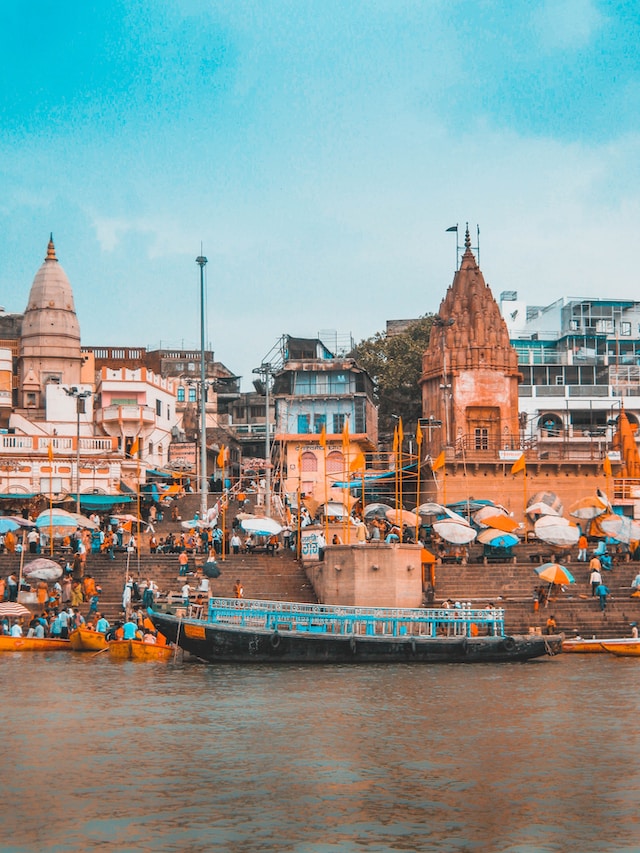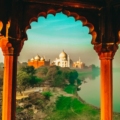Varanasi, also known as Kashi and Banaras, is one of the oldest continuously inhabited cities in the world. Nestled on the banks of the sacred Ganges River in the northern Indian state of Uttar Pradesh, Varanasi is a city that effortlessly weaves together spirituality, history, and culture. Its ancient temples, bustling ghats, and vibrant streets make it a must-visit destination for travelers seeking an authentic Indian experience. In this article, we will explore some of the enchanting tourist spots that Varanasi has to offer.
1.Dashashwamedh Ghat
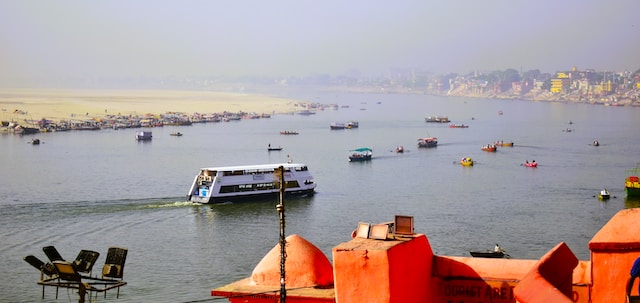
Dashashwamedh Ghat is one of the most iconic and bustling ghats in Varanasi. Every evening, it comes alive with the mesmerizing Ganga Aarti ceremony. Pilgrims and tourists gather to witness priests performing intricate rituals, accompanied by the rhythmic chants and the enchanting sounds of bells and conch shells. The sight of oil lamps floating on the Ganges is a truly spiritual experience that captures the essence of Varanasi.
2.Kashi Vishwanath Temple
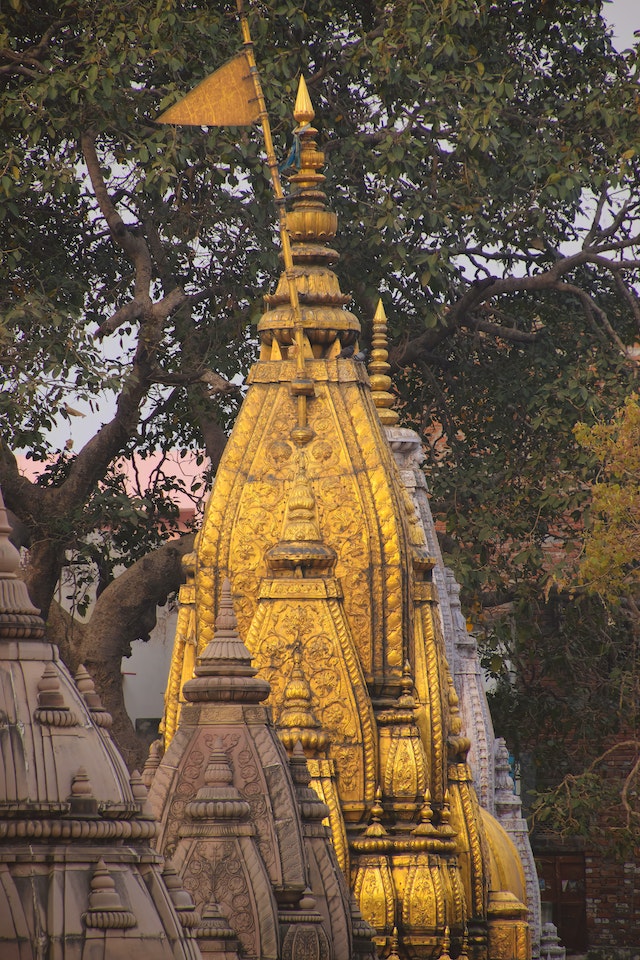
The Kashi Vishwanath Temple, also known as the Golden Temple, is one of the holiest Hindu shrines dedicated to Lord Shiva. The temple’s golden spire shines brilliantly in the sunlight and is a symbol of faith and devotion. Pilgrims from all over the world flock to this sacred site to seek blessings and experience the divine energy that permeates the area.
3.Sarnath
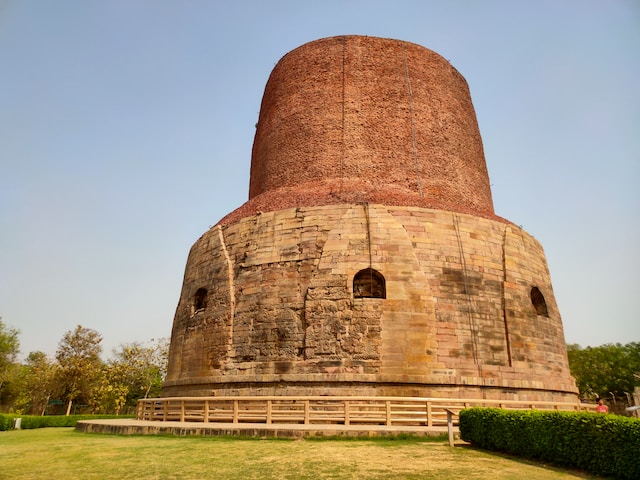
Located just a short drive from Varanasi, Sarnath is an important Buddhist pilgrimage site. It is here that Lord Buddha gave his first sermon after attaining enlightenment. Visitors can explore the Dhamek Stupa, Mulagandha Kuti Vihar, and the Sarnath Archaeological Museum, which houses an impressive collection of ancient artifacts and sculptures.
4.Manikarnika Ghat
Manikarnika Ghat is one of the two prominent cremation ghats in Varanasi, and it is believed that those who are cremated here attain moksha (liberation from the cycle of rebirth). While it may seem morbid to some, observing the cremation rituals at Manikarnika Ghat provides a profound insight into the cycle of life and death in Hinduism.
5.Banaras Hindu University (BHU)
The sprawling Banaras Hindu University is not only a center of education but also a beautiful attraction for visitors. The BHU campus houses the Bharat Kala Bhavan, which boasts a remarkable collection of art and artifacts from across India. The serene Bharat Mata Temple is another highlight, with a map of undivided India carved in marble.
6.Varanasi Silk Sarees
No visit to Varanasi is complete without exploring its rich textile heritage. The city is famous for its exquisite Banarasi silk sarees, known for their intricate designs and craftsmanship. Tourists can visit local silk weaving workshops and showrooms to witness the creation of these stunning pieces of art and purchase souvenirs to take home.
7.Assi Ghat
Assi Ghat is a tranquil spot where the Assi River meets the Ganges. It is a popular place for yoga and meditation, attracting spiritual seekers from around the world. Sunrise and sunset at Assi Ghat offer breathtaking views, and the nearby cafes and restaurants provide a peaceful setting to savor a cup of chai or a vegetarian meal.
Conclusion
Varanasi is a city of contrasts, where ancient traditions coexist with modern life. It’s a place where spirituality is interwoven with daily routines, and every stone has a story to tell. A visit to Varanasi is not just a trip; it’s a spiritual and cultural journey that leaves a lasting impression. The city’s timeless charm, rich history, and vibrant culture make it an unforgettable destination for travelers seeking an authentic Indian experience. So, pack your bags, and embark on a soul-stirring adventure in the heart of Varanasi, where the past and present converge along the sacred banks of the Ganges.
Frequently Asked Questions (FAQs)
Q1: Where is Varanasi located?
A1: Varanasi, also known as Kashi or Banaras, is situated in the northern Indian state of Uttar Pradesh, along the banks of the Ganges River.
Q2: What is the significance of Dashashwamedh Ghat?
A2: Dashashwamedh Ghat is renowned for its daily Ganga Aarti ceremony, a mesmerizing ritual that takes place in the evening, offering a profound spiritual experience. Pilgrims and tourists gather here to witness this beautiful ceremony.
Q3: What is the Kashi Vishwanath Temple, and why is it famous?
A3: The Kashi Vishwanath Temple, also known as the Golden Temple, is one of the holiest Hindu shrines dedicated to Lord Shiva. Its golden spire shines brilliantly and symbolizes faith and devotion, attracting pilgrims from around the world.
Q4: What is Sarnath, and why is it important?
A4: Sarnath is a significant Buddhist pilgrimage site located near Varanasi. It’s where Lord Buddha delivered his first sermon after attaining enlightenment. Visitors can explore historical monuments and a museum showcasing ancient artifacts.
Q5: Tell me about Manikarnika Ghat. Why is it famous?
A5: Manikarnika Ghat, one of Varanasi’s prominent cremation sites, is where many seek moksha (liberation) through their final rites. While it may seem unusual, it offers insight into Hindu death rituals and the cycle of life and death.
Q6: What attractions are there at Banaras Hindu University (BHU)?
A6: BHU houses the Bharat Kala Bhavan, a museum with an impressive collection of Indian art and artifacts. The campus also includes the Bharat Mata Temple, featuring a marble map of undivided India.
Q7: Are there any local specialties to explore in Varanasi?
A7: Yes, Varanasi is famous for its exquisite Banarasi silk sarees. Visitors can explore local silk weaving workshops and showrooms to witness the artistry behind these sarees and purchase them as souvenirs.
Q8: What can one experience at Assi Ghat in Varanasi?
A8: Assi Ghat is a serene spot where the Assi River meets the Ganges. It’s popular for yoga and meditation, offering breathtaking sunrise and sunset views. There are also cafes and restaurants nearby to enjoy a cup of chai or a vegetarian meal.
Q9: Is Varanasi only a spiritual destination, or does it offer a cultural experience too?
A9: Varanasi is both a spiritual and cultural destination. Its rich history, vibrant streets, and cultural diversity make it an excellent place to explore India’s cultural heritage alongside its spiritual significance.
Q10: How can I plan my trip to Varanasi?
A10: To plan your trip to Varanasi, start by booking your accommodations in advance. Consider the best time to visit, which is typically during the cooler months between October and March. Make a list of the places you want to visit and explore the local cuisine and culture. Don’t forget to respect local customs and traditions while visiting spiritual sites.
